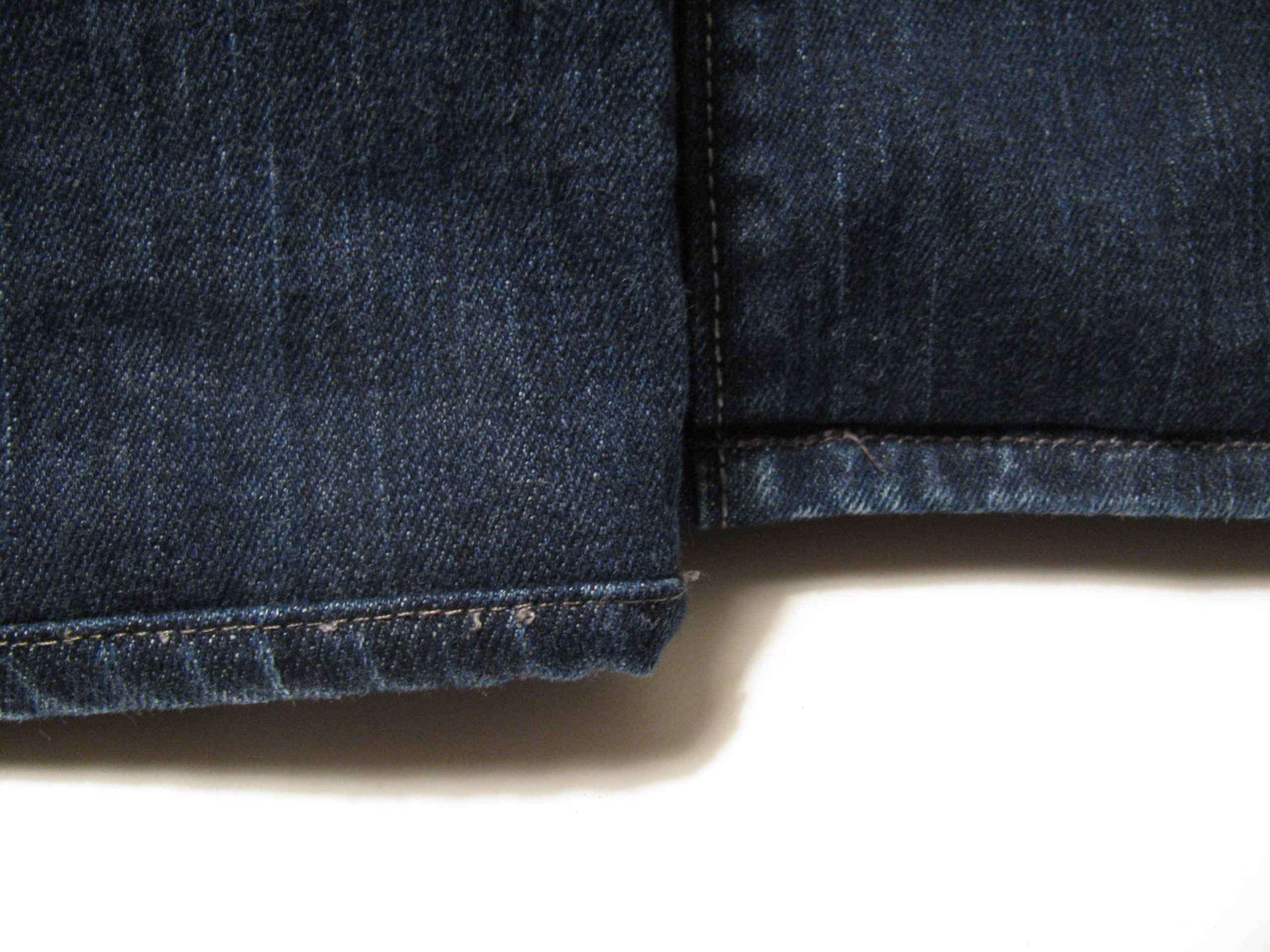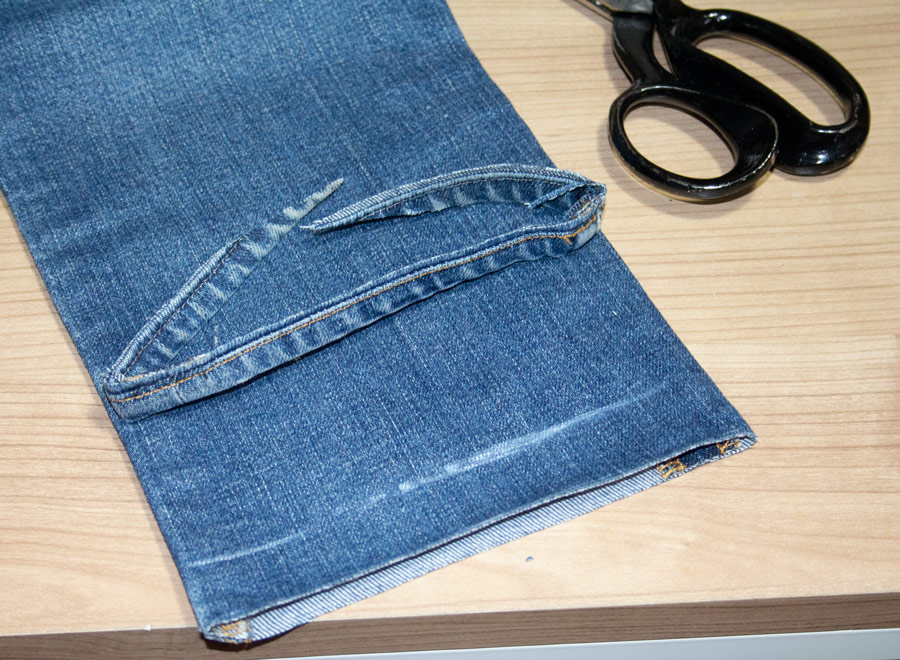
Introduction:
Hemming jeans with original hem are a wardrobe staple, yet finding the perfect fit can be a challenge. One common alteration that often arises is hemming to achieve the right length without losing the authentic look of the original hemline. This guide delves into the art of tailoring and offers expert tips on how to hem jeans while preserving their factory finish.
The Importance of Original Hemline:
Maintaining the original hemline is crucial because it preserves the integrity of the jean’s design, including any distressing or unique washes. The original hem also ensures that the weight of the denim remains consistent throughout, preventing an uneven appearance at the bottom.
Pinpoint Measurement:
To begin, wear the jeans with your preferred shoes as this will determine the exact length you need. Fold the jeans inside-out to the desired length and make sure they’re even all around. Use pins to mark where you want the new hemline, ensuring it aligns with the existing crease from the original hem.
The Invisible Stitch:
Instead of cutting off excess fabric and creating a new hem, a tailor may use a technique called the “invisible hem” or “jean cuff method”. This involves folding the extra fabric under itself, securing it in place with stitches that mimic the original seam stitching pattern. This way, when flipped back out, the original hemline appears untouched.
Inside Hemming:
For those who prefer not to fold, another method involves removing the original hem, shortening the leg, then reattaching the original hem. This process requires precision sewing to match the stitch color and style exactly, making it appear as if the jeans were never altered.
Consideration for Distressing:
If the jeans have distressed details near the hem, take extra care to preserve these elements. Make duplicates of any rips or frays before altering and reattach them after hemming to maintain the designer’s aesthetic.
Professional Assistance:
While DIY methods can work wonders, for best results, consult a professional tailor who specializes in denim alterations. They have the experience and tools necessary to handle different types of denim, weights, and finishes, ensuring a seamless result.
Quality Tools:
Using the right tools is key – a strong needle suitable for denim, heavy-duty thread, and possibly a denim-specific sewing machine will ensure the hem can withstand wear and tear.
Hemming jeans without compromising the original hemline is both an art and a science. It demands attention to detail, patience, and sometimes professional expertise. By following these expert tips, you can customize your jeans to your ideal length while still enjoying the factory-finished look that makes each pair unique and stylish.
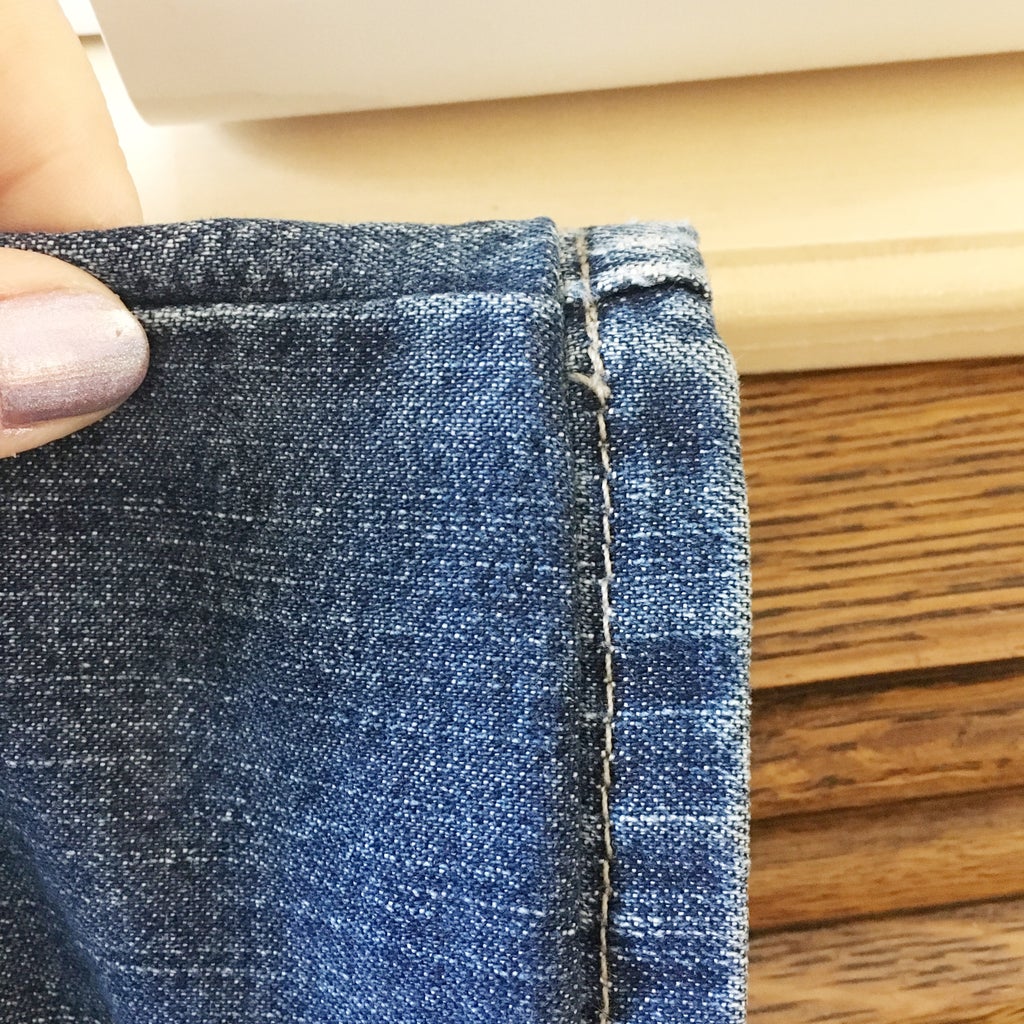
Hemming jeans is a common alteration that can greatly enhance their fit and overall appearance. However, preserving the original hem – also known as the factory or raw hem – has become increasingly popular due to its ability to maintain the integrity of the design and the authentic look of the jeans. This guide delves into the importance of keeping the original hem while altering jeans and provides step-by-step instructions on how to do so without compromising style or quality.
Why Keep the Original Hem?
- Style Preservation: The original hem often includes unique distressing, fraying, or chain stitching that’s part of the designer’s aesthetic. By maintaining this detail, you keep the jeans true to their intended design.
- Quality Consistency: Factory hems are typically crafted with high-quality finishing techniques, which can be difficult to replicate in an alteration setting. Keeping the original hem ensures the durability and longevity of your jeans.
- Visual Appeal: An original hem contributes to the overall silhouette and balance of the jean. It helps to maintain the intended length-to-width ratio and prevents a ‘stumpy’ look that might occur from a conventional hem.
The Process: How to Hem Jeans with Their Original Hem
- Measurement & Marking: First, measure where you want the new hemline to fall. While wearing the jeans with shoes you would normally pair them with, mark the desired length using chalk or fabric-safe marker, ensuring it aligns with the existing crease.
- Fold & Pin: Carefully fold the denim up to the marked line, maintaining the natural cuff if there is one. Use straight pins to secure the fold, making sure not to puncture the original hem.
- Stitching: The trickiest part of this process is hiding the stitch inside the original hem. Using a sewing machine or by hand, sew along the inner edge of the original hem, being cautious not to stitch through to the outside. If possible, use a matching thread color and a blind hem stitch for a nearly invisible alteration.
- Finishing Touches: Once stitched, check both sides of the hem to ensure the stitches aren’t visible. For added security, you may also tack down any loose threads or fray the new edge slightly to blend with the pre-existing distressed areas.
- Professional Assistance: If you’re not confident in your sewing skills or the jeans have a particularly complex hem, consider taking them to a professional tailor experienced in maintaining original hems. They will have the tools and expertise to execute the alteration flawlessly.
Hemming jeans with their original hem requires precision and care, but it’s a worthwhile effort that preserves the essence of the garment and extends its stylish lifespan. With patience and attention to detail, you can achieve a custom-fit pair of jeans that still retain their designer’s touch and authenticity.
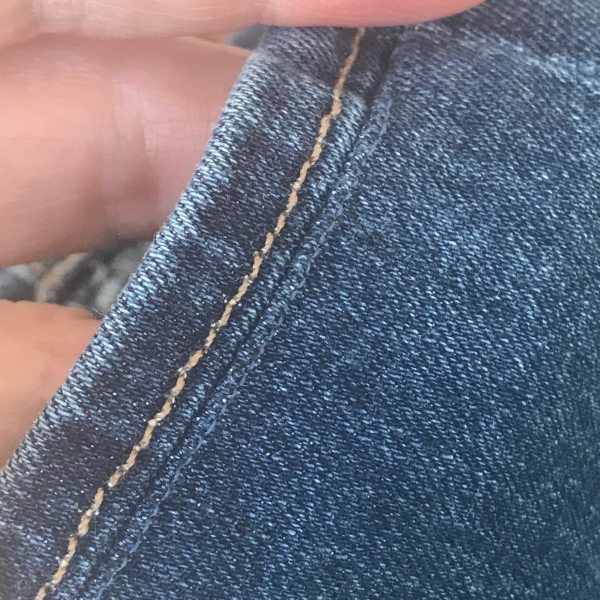
Original hem jeans alteration is a precise and sophisticated tailoring technique that allows you to customize the length of your jeans without compromising their original, factory-finished hem. This method ensures that your denim retains its authentic look while fitting flawlessly on your unique body proportions. Whether it’s for achieving the perfect crop or adjusting to your exact inseam length, this guide will walk you through the process of mastering the original hem alteration, enabling you to elevate your denim game with style and precision.
Understanding the Importance of Original Hem
- The Aesthetics: Delve into why preserving the original hem is crucial for maintaining the integrity and character of designer denim. Discuss how the distressed details, chain stitching, and wash patterns are integral parts of the jean’s design.
- The Fit Advantage: Explain how an altered original hem can create a more tailored look that fits perfectly at the ankle, enhancing the overall silhouette of your outfit and ensuring a polished appearance from top to bottom.
The Art of Original Hem Alteration
- The Process Overview: Including initial measurements, pinning, cutting (if necessary), folding, and reattaching the original hem.
- Professional Techniques: Highlight specialized techniques such as invisible mending, blind stitch hemming, and chainstitch machines that professionals use to make the alteration seamless and indistinguishable from the manufacturer’s work.
- DIY Tips & Tricks: For those who prefer DIY alterations, offer tips on tools needed, how to take accurate measurements, and tricks for a clean and secure finish.
Picking the Right Jeans for Alteration
- Jeans Types: Not all jeans are ideal candidates for original hem alteration. Discuss which types of jeans – straight leg, bootcut, skinny, wide-leg, etc. – are most suitable for this type of customization.
- Denim Weight and Stretch: Consider the impact of denim weight and stretch content on the feasibility and outcome of the alteration. Heavier denim may require different handling than lighter or stretchier fabrics.
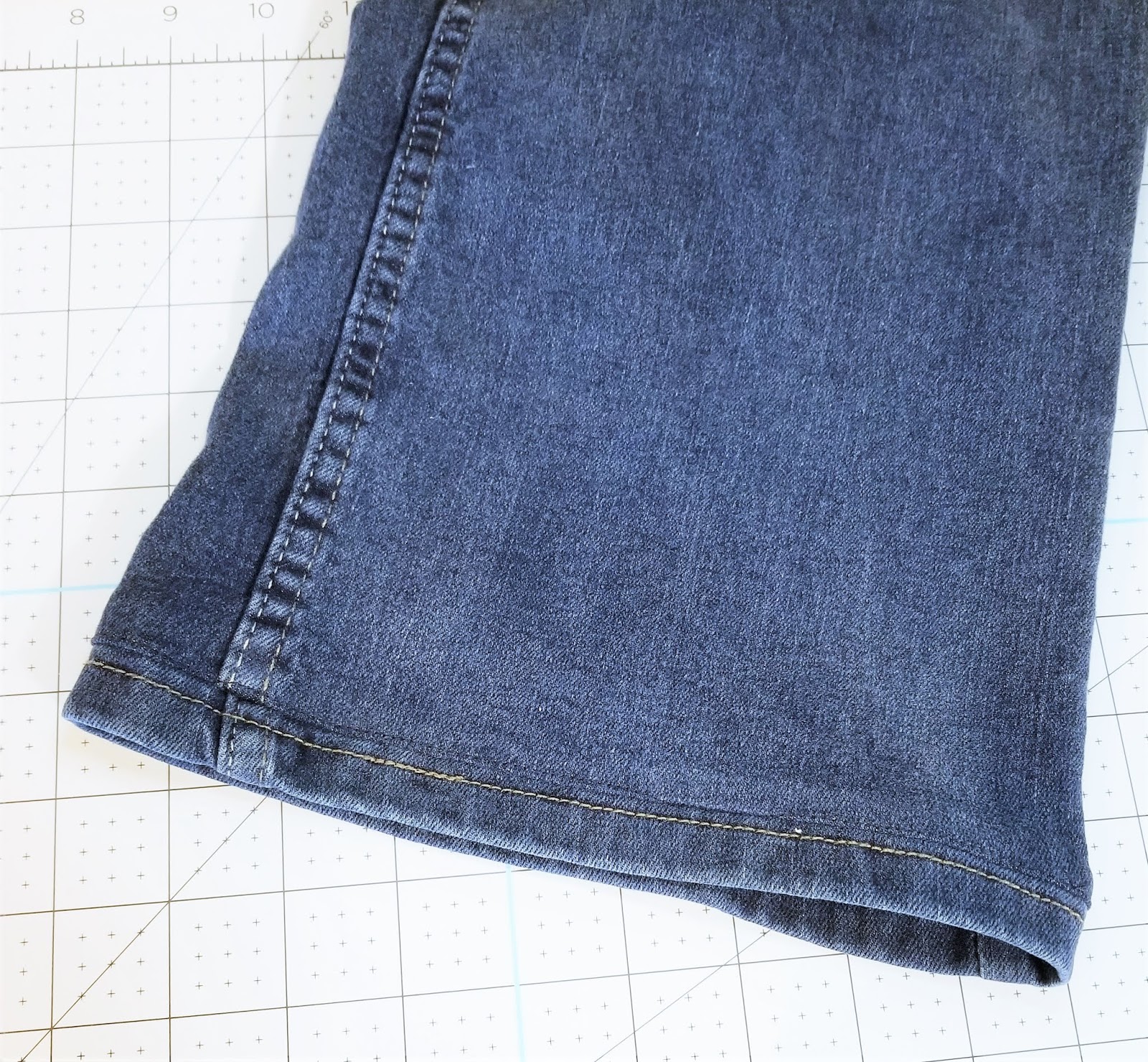
Conclusion
Mastering the original hem jeans alteration technique empowers you to personalize your denim wardrobe without sacrificing style or quality. With the right knowledge and possibly professional assistance, you can transform any pair of jeans into a custom-fit masterpiece that complements your individual style and enhances your entire ensemble. This skill not only saves you from the hassle of searching for that elusive ‘perfect fit’ but also preserves the inherent value and beauty of premium denim.
